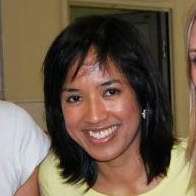Last week, I wrote about the kindness of Malaysians. The same week, I heard of the arrests of activists participating in a rally calling for the arrest of the Prime Minister in light of his most recent grafts allegations.
Speaking of coincidences (or perhaps I meant, speaking of kindness), one of the persons arrested is a great friend of mine, a lawyer I could count on to bail me out should I ever get arrested (hopefully for good reasons), in other words, a person of good conscience. (In fact she often bails out other activists in trouble.)
She and I, we are similar, yet we are different. I have always been idealistic, but I have a backpack and I can always leave, careless about the things I would leave behind in the process.
Her narrative, meanwhile, has always been a different one, that of solidarity, and of staying, even if times are hard. Her narrative will always be better than mine, so today’s story is not of her.
Rather, I am telling a small story from my side of the world, of not just a fight against injustice, but also a lesson on staying.
(Incidentally, Margarita the cow is now inside my wooden house and is refusing to leave. There is also a lesson in this.)
Far in the north-west of Colombia are lands so vast, so rich, so fertile, where underneath lies mineral resources such as carbon and gold, and above, of agricultural products as varied as rice, corn, cocoa, coffee, and fruits such as zapotes, lulos, guavas, avocados and pineapples, all of which thrive so easily with little intervention. The population – made up of farmers or indigenous communities who began settling in the area in the 1960s – lives simple, but rich and fulfilling lives, working daily on their fields to feed their family.
Their lives are a seeming paradise, but their land (the curse of natural resources!) attract interest from corporations looking to expand their reach in extractive resources; criminal groups looking to move coca from South America to other parts of the world; to both legal and illegal armed actors (the military, the FARC insurgency, and various paramilitary groups) seeking control over the zone.
Due to these external interests, their daily lives are fraught with high levels of violence, and intermingle frequently with the risks of movements of armed actors, of anti-personal mines, of displacement, and of combat.
As the situation turned grim in the 1990s when escalating violence resulted in the extrajudicial deaths of civilian populations, community leaders and members began to organize themselves, and on March 1997, called themselves a peace community.
Conscientiously objecting to the war and demanding their rights as civilians not to be involved in a conflict, the community denounced the use of arms within their territories and committed to a variety of principles in the process (including cooperative communal work, prohibition of alcohol, the non-use of illicit drugs and the refusal to provide information to armed actors).
Despite this initiative (or perhaps, because of this initiative), violence continued in the area, escalating as armed actors became suspicious of the reasons behind the community, each fearing that it was instigated by their enemy. In the years following, incursions into their land by armed actors escalated and in many cases, resulted in the extra-judicial deaths of many of its leaders.
Year after year, in attempts to reconcile the principles of their community and the overall objective of peace within Colombia, the community met with state entities, assigning a spokesperson to discuss its interests and proceed judicially to bring those responsible for the massacres in the zone before justice.
However, after two pivotal massacres in the years 2000 (a paramilitary incursion into a community settlement with a hit list and the murder of six of its leaders, while military helicopters hovered overhead) and 2005 (two leaders of the community were found dead alongside their families – including three children – their bodies brutally decapitated), the community declared “ruptura”, a form of break against state institutions. According to the community, the boycott represented a moral imperative to fight against state processes that had delegitimized their struggle for justice, and against judicial processes that entrenched impunity rather than provided support for victims.
Today, 18 years after its founding, the community is protected by various forms of international tools, from protective measures from the Inter-American Court of Human Rights, to the presence of international observers (hence my being here), to the use of legal discourse based on international humanitarian law.
Their lives are still simple, but in a way, they have managed to turn their victimhood into a place of strength – where they are free to exercise their conscience, even though now it frequently includes the additional routine of having to constantly tell armed actors to leave.
Because it is their land. And they are staying. – August 11, 2015.
* This is the personal opinion of the writer or publication and does not necessarily represent the views of The Malaysian Insider.


Comments
Please refrain from nicknames or comments of a racist, sexist, personal, vulgar or derogatory nature, or you may risk being blocked from commenting in our website. We encourage commenters to use their real names as their username. As comments are moderated, they may not appear immediately or even on the same day you posted them. We also reserve the right to delete off-topic comments